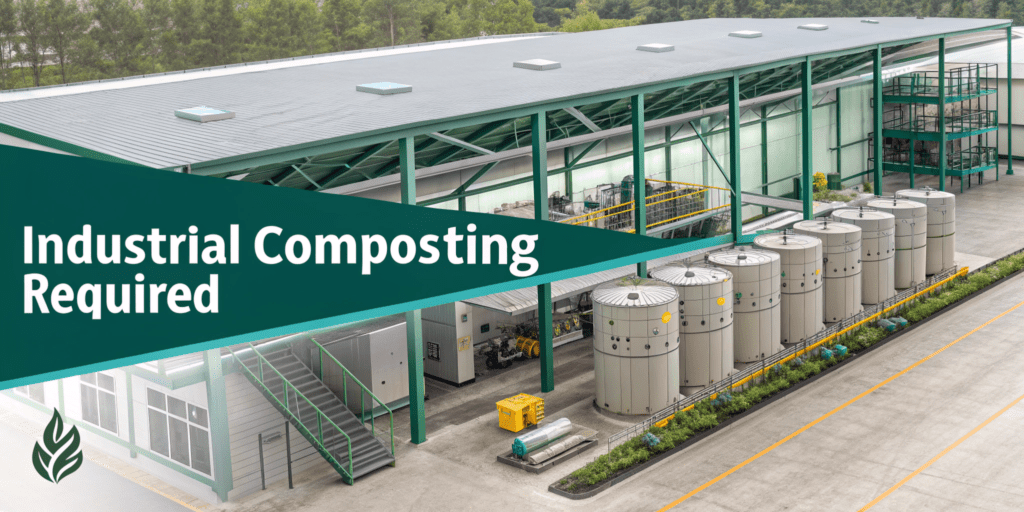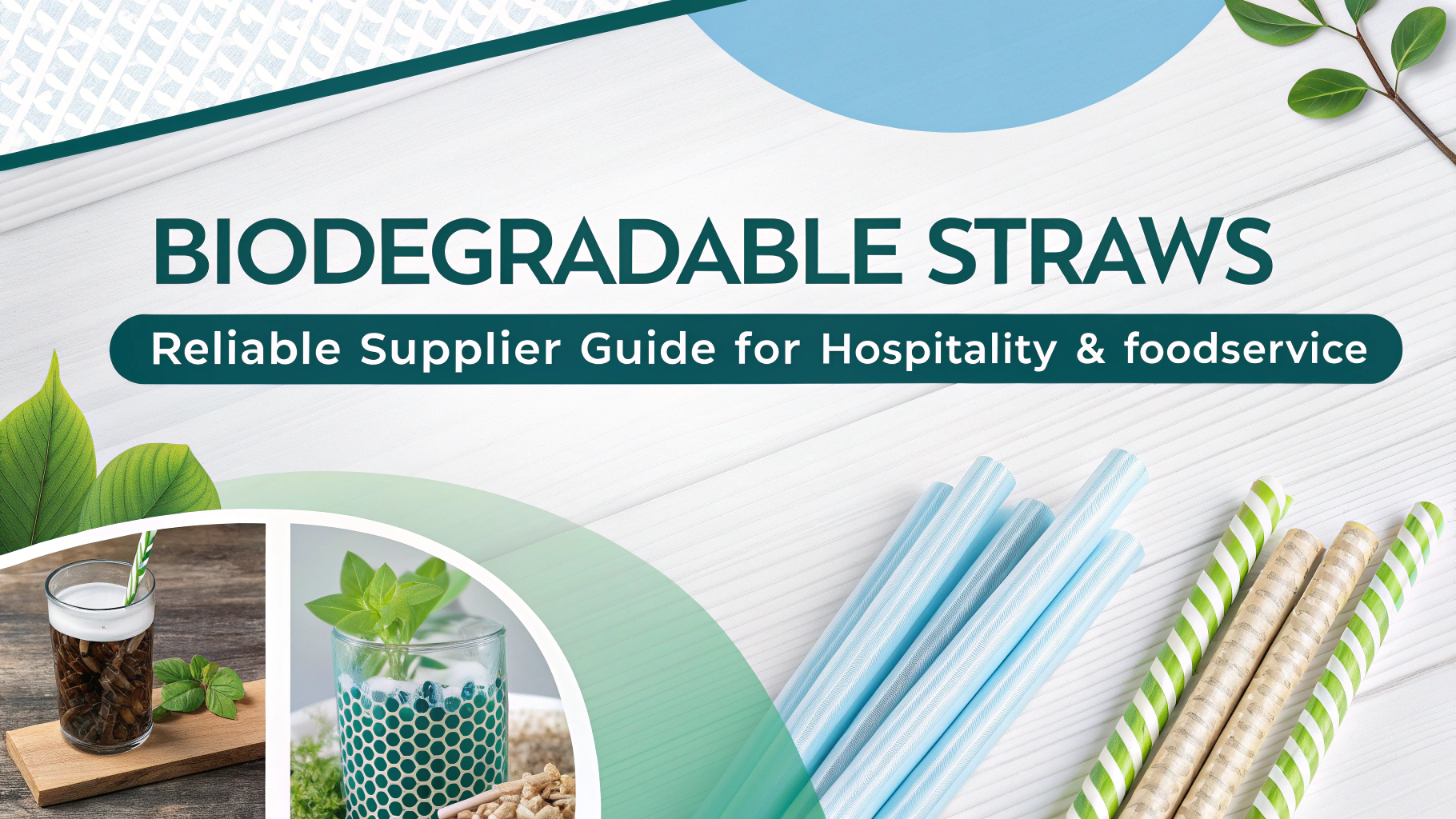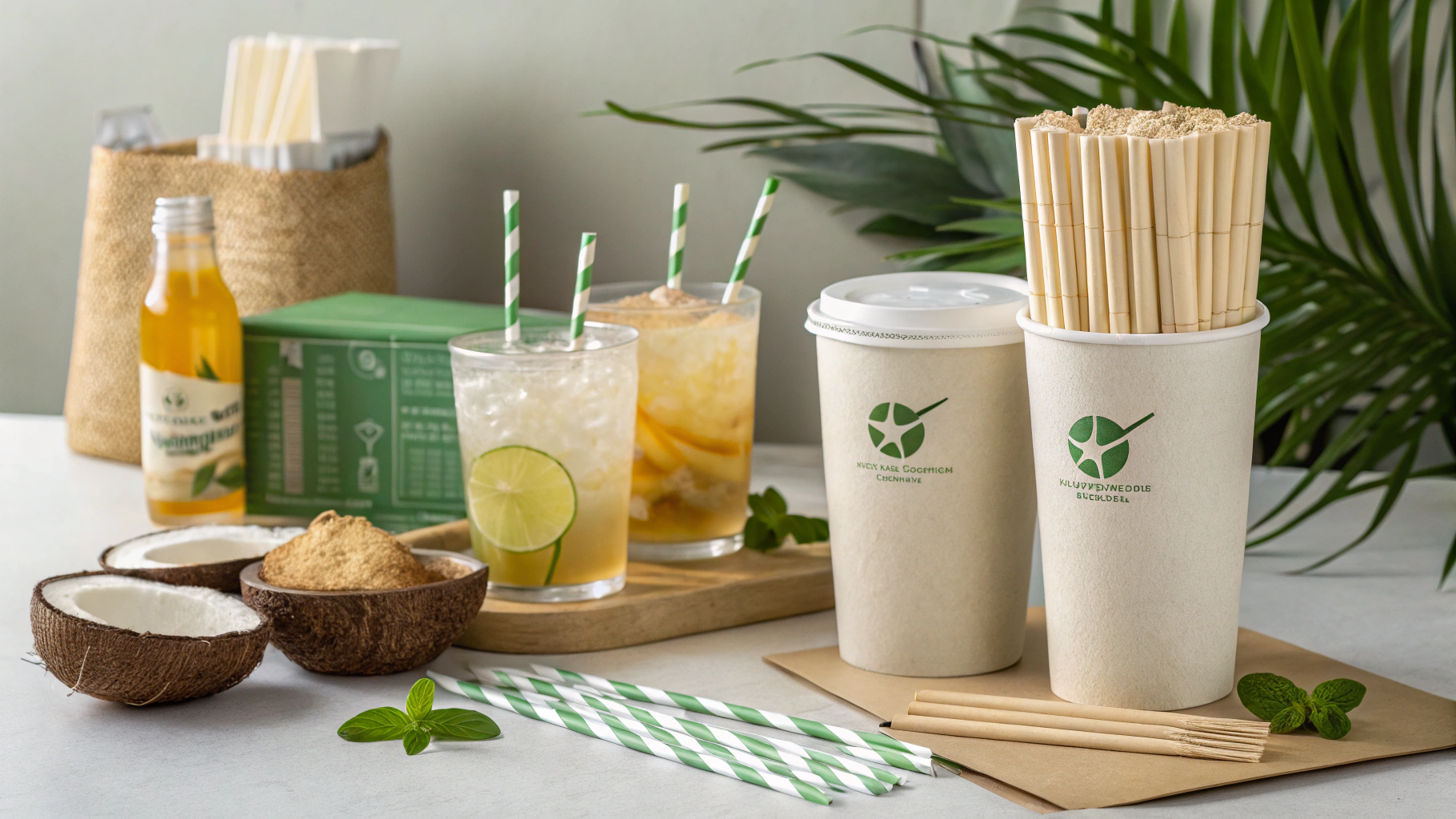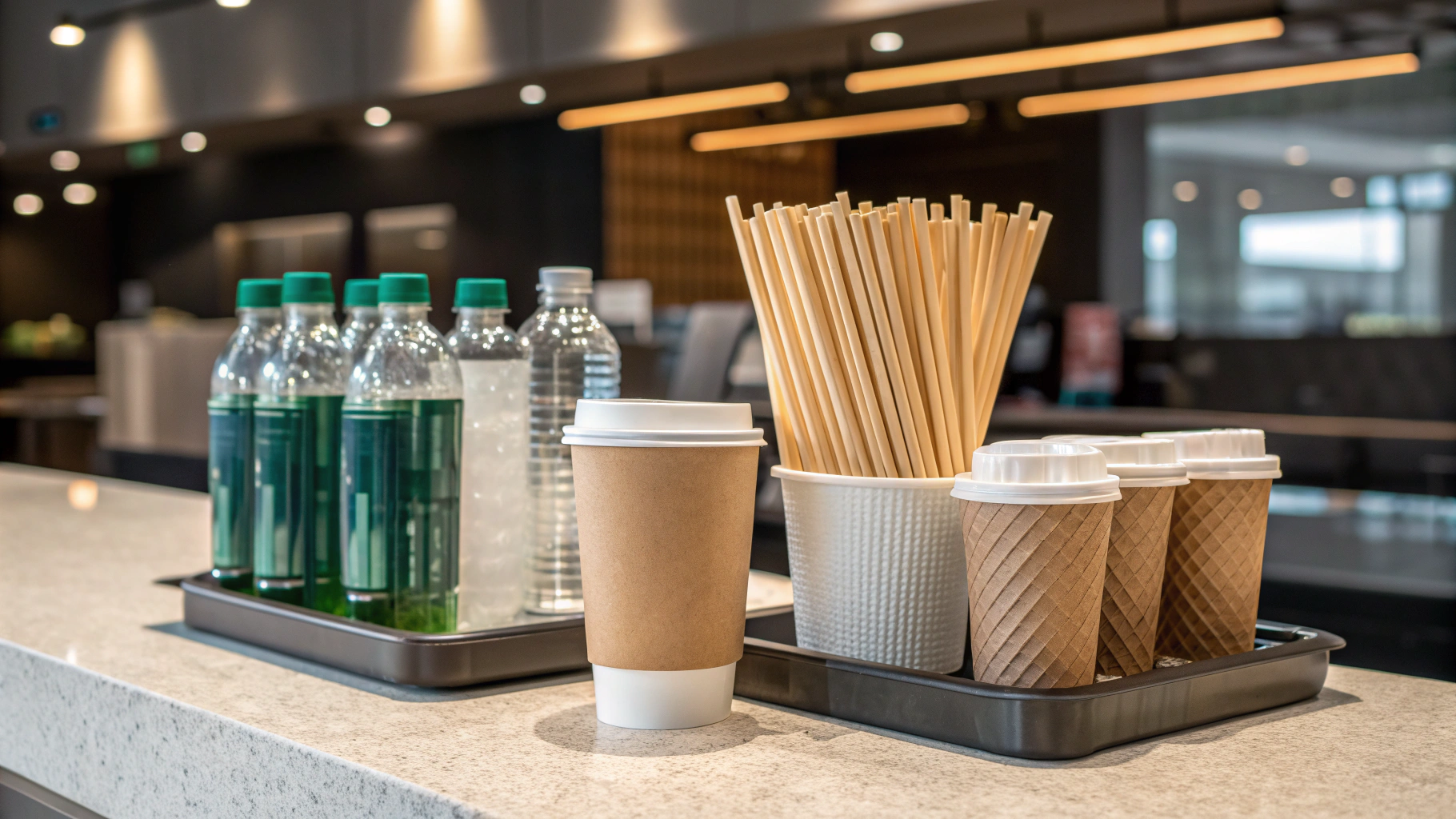
For procurement managers, operations directors, sustainability officers, and supply chain executives, the mandate to reduce environmental impact is no longer a peripheral concern—it’s a core strategic imperative. Evaluating single-use straw alternatives demands a robust, data-driven understanding of their true carbon footprint, moving beyond surface-level claims to deep life cycle analysis. Ignoring this complexity can lead to misallocated resources, regulatory non-compliance, and significant reputational damage in a market increasingly sensitive to genuine environmental stewardship.
The stakes are high. Global single-use plastic bans are rapidly accelerating the shift to sustainable alternatives, with the global biodegradable straw market projected to reach a staggering USD 178.87 billion by 2031, growing at a robust 23.20% Compound Annual Growth Rate (CAGR). This monumental shift necessitates informed decisions to ensure your supply chain contributes positively to your organization’s sustainability goals, rather than inadvertently adding to its environmental burden.
Understanding the True Carbon Footprint of Plastic Straws
Traditional plastic straws, primarily made from polypropylene (PP), represent a significant environmental liability throughout their lifecycle. Their production is inherently carbon-intensive, relying heavily on fossil fuels.
Production’s Energy Intensity & Emissions
De productie van plastic rietjes is een energie-intensief proces met een aanzienlijke ecologische voetafdruk. Voor de productie van 1.000 kg polypropyleen (PP) is ongeveer 75 kg olie en 61 kg aardgas nodig. Dit vertaalt zich naar een geschatte CO2-voetafdruk van 10-15 kg CO2-equivalent per 1.000 plastic rietjes. Om dit in perspectief te plaatsen: de totale CO2-impact van de productie van plastic stro in de Verenigde Staten alleen al is vergelijkbaar met de gemiddelde uitstoot van 19 miljoen auto's die een jaar lang rijden. Bovendien komt er bij het gebruikelijke scenario voor het einde van de levensduur van plastic, namelijk verbranding, ongeveer 1.343 kg CO2-equivalent per ton plastic rietjes vrij, volgens Britse DEFRA-gegevens.
End-of-Life: Persistent Pollution & Microplastic Threat
Naast de productie vormt de hardnekkige aard van plastic rietjes een ernstige uitdaging voor het milieu. Ze zijn niet biologisch afbreekbaar en gaan honderden jaren mee op stortplaatsen en in natuurlijke ecosystemen. Schattingen geven aan dat 8,3 miljard plastic rietjes de stranden van de wereld vervuilen, waarvan 7,5 miljoen alleen al aan de Amerikaanse kusten. Deze ogenschijnlijk onschadelijke voorwerpen zorgen voor 73.000 ton jaarlijks plastic stroafval in de VS.
Terwijl ze langzaam worden afgebroken, vallen plastic rietjes uiteen in microplastics: kleine fragmenten die in ons milieu terechtkomen. Deze microplastics zijn aangetroffen in 80% van de menselijke bloedmonsters en bevatten giftige chemicaliën zoals BPA. Deze wijdverbreide verontreiniging heeft niet alleen gevolgen voor ecosystemen en wilde dieren, maar vormt ook een groeiende zorg voor de menselijke gezondheid, waardoor op de lange termijn een aanzienlijk commercieel en nalevingsrisico ontstaat voor bedrijven die nog steeds afhankelijk zijn van conventioneel plastic.Plastic rietjes brengen aanzienlijke milieurisico's met zich mee, van de productie tot de aanhoudende vervuiling door microplastics.
De koolstofvoetafdruk van biologisch afbreekbare rietjes deconstrueren: een genuanceerde kijk
The term “biodegradable” often conjures images of rapid, harmless decomposition. However, the reality is more nuanced. The carbon footprint of biodegradable straws varies significantly depending on the material and the specific conditions required for their degradation.

PLA Straws: Bioplastic Potential vs. Industrial Composting Needs
Polymelkzuur (PLA) rietjes zijn afkomstig van hernieuwbare bronnen zoals maïszetmeel. Hoewel deze plantaardige oorsprong veelbelovend lijkt, geven sommige levenscyclusanalyses (LCA's) aan dat PLA-rietjes een hogere totale milieubelasting kunnen hebben in vergelijking met PP-rietjes (samengestelde relatieve milieu-impact (REI) 6,4-6,8 voor PLA versus 2,4-3,2 voor PP in bepaalde verwijderingsscenario's). Een sleutelfactor is dat voor een effectieve biologische afbraak van PLA specifieke industriële composteringsfaciliteiten nodig zijn, die niet overal beschikbaar zijn. Als PLA-rietjes zonder de noodzakelijke omstandigheden (gebrek aan zuurstof en licht) op stortplaatsen terechtkomen, kunnen ze, net als conventionele kunststoffen, langzaam worden afgebroken, waardoor de beoogde milieuvoordelen worden ondermijnd. Het productieafval dat ontstaat tijdens de productie van bioplastic stro kan ook de CO2-voetafdruk van PLA vergroten, hoewel procesoptimalisatie dit kan verzachten.
Paper Straws: Resource Consumption & PFAS Concerns
Paper straws are widely adopted as a plastic alternative and are generally biodegradable. However, their production is notably resource-intensive, demanding significant water and energy, and can pose a risk of deforestation if not sourced sustainably. Some LCAs report a carbon footprint of 2–3 kg CO2 per 1,000 paper straws, while others indicate a significantly higher Global Warming Potential of 2.58E+06 kg CO2 equivalent. A critical concern highlighted by a 2023 study published inFood Additives & Contaminantsper- en polyfluoralkylstoffen (PFAS), of ‘forever chemicaliën’, aangetroffen in 90% van de geteste biologisch afbreekbare rietjes, waaronder papier, wat aanzienlijke risico’s voor het milieu en de gezondheid met zich meebrengt. Bovendien leiden de duurzaamheidsproblemen die inherent zijn aan veel papieren rietjes vaak tot een hogere consumptie, waardoor een deel van de potentiële milieuvoordelen ervan teniet wordt gedaan.
Andere plantaardige rietjes (rijst, bamboe, tarwe): voordeel van natuurlijke afbraak
Materials like rice, bamboo, and wheat offer a more genuinely natural decomposition advantage. These alternatives leverage rapidly renewable resources, reducing reliance on fossil fuels. For instance, rice straws can decompose within 3–6 months. Their production generally involves less processing and is less reliant on synthetic chemicals, making them naturally more eco-friendly and reducing concerns around hidden contaminants like PFAS.Biodegradable straw impacts vary by material, requiring specific conditions for effective decomposition.
Life Cycle Assessment (LCA): The Gold Standard for Carbon Footprint Comparison
Om de milieu-impact van elk product, inclusief rietjes, echt te begrijpen, is een uitgebreide levenscyclusanalyse (LCA) onmisbaar. LCA evalueert het volledige spectrum van de impact op het milieu, van de winning van grondstoffen, via de productie en het transport, tot de verwijdering van een product aan het einde van de levensduur. Deze rigoureuze aanpak voldoet aan internationale normen zoals ISO 14040, waardoor een holistische visie wordt gegarandeerd die verder gaat dan geïsoleerde datapunten. Bij alle soorten stro blijkt de productie van grondstoffen consequent een belangrijke bijdrage te leveren aan de algehele milieubelasting.
Tegenstrijdige LCA-resultaten: waarom nuance belangrijk is
Het is van cruciaal belang voor B2B-beslissers om te erkennen dat LCA’s uiteenlopende resultaten kunnen opleveren. Dit is vaak te wijten aan verschillen in methodologieën, systeemgrenzen en de regionale energiemixen die voor de productie worden gebruikt. De plasticproductie in Zuid-Afrika, die sterk afhankelijk is van steenkool, zal bijvoorbeeld inherent een hogere uitstoot van klimaatverandering veroorzaken dan de productie in regio's met schonere energiebronnen. Sommige onderzoeken tonen mogelijk PLA aan met een lager aardopwarmingsvermogen (4,28E+05 kg CO2 eq) dan PP (5,66E+05 kg CO2 eq), terwijl andere, met behulp van andere parameters, het tegenovergestelde aantonen. Dit onderstreept de noodzaak van grondig due diligence en een genuanceerd begrip van claims van leveranciers, waardoor u wordt aangespoord om dieper in te gaan op de specifieke LCA achter elke duurzaamheidsclaim.LCA biedt een holistisch beeld van de impact op het milieu, maar de resultaten variëren afhankelijk van de methodologie en regionale factoren.
Navigeren door regelgevingslandschappen en marktdynamiek voor duurzame rietjes
Mondiale overheidsregelgeving versnelt snel de verschuiving van plastic voor eenmalig gebruik, waardoor een urgente en groeiende vraag naar duurzame alternatieven ontstaat. Deze regeldruk is een belangrijke motor achter de explosieve groei van de markt voor biologisch afbreekbaar stro, die naar verwachting in 2031 178,87 miljard dollar zal bereiken met een CAGR van 23,20%. Bedrijven die proactief conforme, milieuvriendelijke producten omarmen, verwerven een cruciaal concurrentievoordeel.

B2B Market Opportunities: Foodservice Dominance & Regional Growth
The foodservice sector is the largest application segment for straws, representing a substantial 55.0% revenue share in 2024. This segment, encompassing restaurants, cafes, and fast-food chains, is particularly susceptible to regulatory changes and consumer preferences for sustainability. North America leads the biodegradable straw market, holding over 40% market share (USD 16.61 billion in 2024), while Asia-Pacific dominates the overall straw market with a 38.5% revenue share in 2024, driven by a booming foodservice industry. These regional dynamics highlight significant opportunities for B2B suppliers and buyers to capitalize on evolving market demands.
The Rise of Certified Compostable Straws
In dit complexe landschap bieden certificeringen essentiële zekerheid. Keurmerken als “BPI Certified Compostable” en “DIN CERTCO” zorgen ervoor dat productclaims onafhankelijk worden geverifieerd, waardoor wordt gegarandeerd dat een product daadwerkelijk zal worden afgebroken tot organisch materiaal in industriële composteerinstallaties zonder schadelijke resten. Toonaangevende leveranciers, zoals Singreen Packaging, reageren met oplossingen die niet alleen milieuvriendelijk zijn, maar ook voldoen aan strenge voedselveiligheidsnormen zoals FDA en ISO 22000, en die voldoen aan de HACCP-normen. Deze toewijding aan gecertificeerde oplossingen is van cruciaal belang voor bedrijven die nalevingsrisico's willen beperken en het vertrouwen van de consument willen versterken. Voor meer gedetailleerde inzichten in wat een rietje echt composteerbaar maakt, raadpleegt u onze uitgebreide gids overBPI composteerbaar versus biologisch afbreekbaar: een duurzaamheidsgids.Regelgeving stimuleert de marktgroei voor duurzame rietjes, waarbij certificeringen cruciaal zijn voor B2B-compliance en vertrouwen.
Vergelijkingstabel: Evaluatie van stro-alternatieven voor B2B-activiteiten
De keuze voor het stromateriaal heeft directe gevolgen voor de operationele kosten, compliance en merkperceptie. De onderstaande tabel biedt een strategisch overzicht voor B2B-beslissers.
| Functie | B2B operationele impact | Nalevingsopmerking | ROI-potentieel |
|---|---|---|---|
| Kunststof (PP) | Lage initiële kosten, brede beschikbaarheid. | Toenemende verboden/regelgeving; hoog risico op milieuvervuiling. | Negatieve merkimpact op de lange termijn; kans op boetes/sancties. |
| PLA (bioplastic) | Matige kosten, vergelijkbaar met plastic; vereist specifieke industriële compostering. | Vereist toegang tot industriële composteringsinfrastructuur; “composteerbare” versus “biologisch afbreekbare” verwarring. | Positieve merkperceptie; lagere stortkosten als het op de juiste manier wordt gecomposteerd. |
| Papier | Matige kosten, overal verkrijgbaar; duurzaamheidsproblemen (vochtig). | Over het algemeen biologisch afbreekbaar; controleer op PFAS-inhoud. | Voldoet aan de ecologische vraag van consumenten; Een hogere consumptie kan het aankoopvolume vergroten. |
| Bamboe/Rijst/Tarwe | Hogere kosten (niche), sterke eco-referenties; enige textuurvariatie. | Zeer biologisch afbreekbaar; sluit aan bij strikte duurzaamheidsmandaten. | Sterkste merkhalo; nichemarktaantrekkingskracht voor premiumsegmenten. |
| Herbruikbaar (metaal/glas) | Hogere kosten vooraf; vereist was-/opslaginfrastructuur. | Zero-waste-kampioen; veerkracht van de regelgeving op lange termijn. | Laagste langetermijnkosten per gebruik; sterke afstemming met de duurzaamheidsdoelstellingen van bedrijven. |
Het kiezen van stromaterialen heeft invloed op de B2B-activiteiten, naleving en ROI, en vereist een zorgvuldige evaluatie.
Case Study: Eco-Forward Foodservice Adopts Local Bioplastic Straws for Reduced Carbon Footprint
A major U.S. restaurant chain faced the urgent challenge of eliminating single-use plastic straws and committed to reducing its supply chain carbon footprint by 20% by 2025. This ambitious target required a comprehensive re-evaluation of its procurement practices.
De oplossing omvatte een strategisch partnerschap met UrthPact, een in de VS gevestigde fabrikant die BPI-gecertificeerde composteerbare rietjes produceert van hernieuwbare plantaardige biopolymeren, waaronder koolzaadolie en maïszetmeel. Door prioriteit te geven aan binnenlandse inkoop heeft de keten de transportemissies, een belangrijk onderdeel van Scope 3-emissies, aanzienlijk verminderd. Dit besluit garandeerde niet alleen de naleving van de opkomende regionale regelgeving, maar versterkte ook hun inzet voor het ondersteunen van lokale economieën.
De impact was meetbaar en impactvol. Binnen 18 maanden droeg het initiatief bij aan een reductie van 15% van de Scope 3-emissies gerelateerd aan verpakkingen, waarmee de oorspronkelijke doelstellingen werden overtroffen. Dit tastbare resultaat versterkte de reputatie van het merk als leider op milieugebied en vormde een krachtig verhaal voor hun duurzaamheidsrapportage. Deze casus toont aan dat strategische partnerschappen met leveranciers en materiaalkeuzes aanzienlijke ecologische en commerciële voordelen kunnen opleveren.De strategische adoptie van bioplastic rietjes verkleinde de CO2-voetafdruk van een restaurantketen en verbeterde de merkreputatie.
Strategic Considerations for Procurement & Operations Leaders
De verschuiving naar duurzame stro-oplossingen vereist meer dan alleen een materiaalruil; het vereist een strategische herziening van inkoop, bedrijfsvoering en afvalbeheer.

Prioriteit geven aan “Verminderen, Hergebruiken” vóór “Vervangen”
Bij het verkennen van alternatieve materialen blijft de aanpak met de meeste impact de hiërarchie van ‘verminderen, hergebruiken, recyclen’. Klanten actief aanmoedigen om af te zien van rietjes of te kiezen voor herbruikbare alternatieven moet een primaire strategie zijn. De markt voor herbruikbare rietjes zal naar verwachting groeien met een CAGR van 6,5% tot 4,0 miljard dollar in 2033, wat wijst op een aanzienlijke marktverschuiving en de bereidheid van de consument voor dergelijke opties. Herbruikbare rietjes, vooral die gemaakt van duurzame materialen zoals metaal of glas, hebben bij consequent gebruik de laagste impact op het milieu op de lange termijn. Onze gids opBiologisch afbreekbare drinkbuizen: een B2B-gidsonderzoekt innovatieve oplossingen die deze aanpak ondersteunen.
Due Diligence: Greenwashing en verborgen risico's vermijden
The proliferation of “biodegradable” claims necessitates rigorous due diligence. Many products marketed as such still require specific industrial composting facilities, which may not be available in all operating regions. Procurement teams must scrutinize certifications carefully. A significant concern, as highlighted by recent studies, is the presence of PFAS “forever chemicals” in up to 90% of tested biodegradable straws, posing environmental and health risks. Businesses must actively seek PFAS-free certified options and verify third-party certifications like BPI Compostable to ensure genuine environmental benefits and avoid inadvertently falling victim to greenwashing.
Investing in Proper Waste Management Infrastructure
The environmental benefits of many biodegradable straws are maximized only when integrated with robust industrial composting infrastructure. In the absence of sufficient oxygen and light, common in landfills, many bioplastics fail to degrade as intended and can even produce methane, a potent greenhouse gas. Businesses must collaborate closely with waste management partners to understand local capabilities and ensure appropriate end-of-life solutions for their chosen materials. Choosing the right supplier is also paramount in this process; our guide onBiodegradable Drinking Straws: How to Choose the Right Supplieroffers crucial insights.Strategic straw solutions demand prioritizing reuse, rigorous due diligence, and proper waste management infrastructure.
Future Trends & Innovation in Sustainable Straws
Het landschap van duurzame stro-oplossingen evolueert voortdurend, gedreven door innovatie en steeds strengere milieumandaten. Als we de komende vijf tot tien jaar vooruitkijken, zullen verschillende belangrijke trends de markt bepalen:
- Geavanceerde biopolymeren:Verwacht de ontwikkeling van biopolymeren van de volgende generatie die verbeterde biologische afbreekbaarheid bieden in een breder scala van omgevingen, mogelijk zelfs mariene omgevingen, zonder dat daarvoor gespecialiseerde industriële composteringsfaciliteiten nodig zijn. Innovaties zoals BioCal™ koolstofnegatieve, composteerbare rietjes, die actief CO2 uit de atmosfeer verwijderen, luiden een nieuw tijdperk van milieuherstellende materialen in. (Reuters)
- PFAS-vrije oplossingen als standaard:Het toenemende bewustzijn en de toenemende regelgeving rond PFAS zullen de industrie in de richting van universeel PFAS-vrije biologisch afbreekbare stro-opties duwen. Certificeringen specifiek voor PFAS-vrije producten worden standaard.
- Integratie van de circulaire economie:Er zal een grotere nadruk komen op werkelijk circulaire oplossingen, waarbij de nadruk zal liggen op materialen die herhaaldelijk kunnen worden gecomposteerd of gerecycled, waardoor afval wordt geminimaliseerd en de hulpbronnenefficiëntie wordt gemaximaliseerd. Dit zal waarschijnlijk gepaard gaan met partnerschappen tussen strofabrikanten, leveranciers van voedseldiensten en composteerfaciliteiten.
- Smart Packaging & Traceability:De integratie van slimme verpakkingstechnologieën die het transparant volgen van de levenscyclus van een product mogelijk maken, van de inkoop van grondstoffen tot de verwijdering, zal steeds vaker voorkomen, wat zal helpen bij het aantonen van echte duurzaamheidsclaims.
- Harmonisatie van regelgeving:De toegenomen mondiale harmonisatie van regelgeving voor plastic voor eenmalig gebruik en normen voor biologische afbreekbaarheid zullen zorgen voor meer duidelijkheid en consistentie voor internationale bedrijven, waardoor de naleving wordt vereenvoudigd en een bredere acceptatie van duurzame materialen wordt aangemoedigd. De Europese Unie blijft bijvoorbeeld het voortouw nemen met ambitieuze richtlijnen over plastic voor eenmalig gebruik.
- Verschuiving naar herbruikbare producten in specifieke segmenten:Hoewel alternatieven voor eenmalig gebruik zullen blijven bestaan, zullen bepaalde B2B-segmenten, vooral die met gesloten systemen (bijvoorbeeld bedrijfscampussen en evenementenlocaties), een aanzienlijke verschuiving naar herbruikbare stro-oplossingen zien vanwege de kosten op de lange termijn en de voordelen voor het milieu.
Deze innovaties zullen B2B-beslissers in staat stellen effectievere, verifieerbare en conforme keuzes te maken, waardoor hun activiteiten in lijn zijn met toekomstige duurzaamheidseisen en een concurrentievoordeel worden geboden.Toekomstige trends zijn onder meer geavanceerde biopolymeren, PFAS-vrije standaarden, integratie van de circulaire economie en toegenomen harmonisatie van de regelgeving.
Competitive Advantage & Business Case
Voor inkoop- en operationele leiders gaat de transitie naar echt duurzame stro-oplossingen niet alleen over compliance; het is een strategische zet die kwantificeerbare concurrentievoordelen oplevert.
Door de CO2-voetafdruk van uw strotoeleveringsketen proactief aan te pakken, kunt u aanzienlijke resultaten boekenkostenbesparingen. Een verminderde afhankelijkheid van fossiele brandstoffen voor de productie, gecombineerd met mogelijk lagere stortkosten als industriële compostering toegankelijk is, heeft een directe impact op uw bedrijfsresultaten. Bovendien vermindert het vermijden van straffen en boetes die verband houden met het niet naleven van de steeds strengere verbodsbepalingen op het gebied van plastic voor eenmalig gebruik de problemen aanzienlijk.risico.
Naast de kosten, destijging van de merkwaardeis enorm. Zowel consumenten als B2B-partners geven prioriteit aan duurzaamheid. Het aantonen van een oprechte inzet voor het verminderen van de impact op het milieu, ondersteund door verifieerbare certificeringen en transparante LCA's, verbetert de reputatie van uw bedrijf, versterkt de klantenloyaliteit en trekt milieubewust talent aan. Dankzij deze proactieve aanpak kunt u vastleggenmarktaandeel kansin een snel groeiend segment. De mondiale verschuiving naar duurzame alternatieven creëert een enorme, onderbediende markt voor bedrijven die op authentieke wijze milieuvriendelijke beloften kunnen waarmaken. Door zich aan te sluiten bij de duurzaamheidsdoelstellingen van bedrijven en gecertificeerde composteerbare of echt biologisch afbreekbare oplossingen te omarmen, kan uw organisatie zichzelf positioneren als een leider, en niet alleen als een volger, op weg naar een lagere CO2-voetafdruk en een duurzamere toekomst.Het gebruik van duurzaam stro biedt concurrentievoordelen voor B2B door kostenbesparingen, risicobeperking en verbeterde merkwaarde.
Conclusie: Duurzame inkoopbeslissingen nemen met data
The journey toward truly sustainable straw solutions is complex, requiring a deep dive into carbon footprints across the entire life cycle. While biodegradable alternatives offer significant advantages in mitigating plastic pollution, their production impacts and disposal requirements demand careful scrutiny. For B2B decision-makers, understanding these nuances, leveraging comprehensive Life Cycle Assessments, and prioritizing certified, responsibly sourced products are paramount to achieving genuine environmental stewardship.
Implement a robust straw sustainability strategy informed by data, optimize your supply chain for verified eco-friendly solutions, and lead your organization towards a genuinely lower carbon footprint and enhanced brand value in a rapidly evolving market.Sustainable procurement requires data-driven decisions, optimizing supply chains for verified eco-friendly solutions.
Veel Gestelde Vragen
What is the primary environmental concern with traditional plastic straws?▼
Traditional plastic straws are non-biodegradable, persisting for hundreds of years and breaking down into harmful microplastics that contaminate ecosystems and potentially human health.
Do all biodegradable straws decompose easily?▼
No, many biodegradable straws, like PLA, require specific industrial composting facilities to break down effectively; without these, they may degrade slowly in landfills.
What are PFAS and why are they a concern in biodegradable straws?▼
PFAS (per- en polyfluoralkylstoffen) zijn ‘forever chemicaliën’ die in sommige biologisch afbreekbare rietjes worden aangetroffen en die vanwege hun persistentie en toxiciteit risico’s voor het milieu en de gezondheid met zich meebrengen.
Hoe kunnen foodservicebedrijven ervoor zorgen dat hun keuzes voor duurzaam stro echt milieuvriendelijk zijn?▼
Bedrijven moeten prioriteit geven aan gecertificeerde composteerbare of PFAS-vrije opties, grondig onderzoek doen naar claims van leveranciers en investeren in een goede infrastructuur voor afvalbeheer.
Wat is de meest impactvolle strategie om de stro-gerelateerde milieu-impact te verminderen?▼
De meest impactvolle strategie is om prioriteit te geven aan ‘verminderen, hergebruiken’ door klanten aan te moedigen af te zien van rietjes of te kiezen voor herbruikbare alternatieven voordat ze vervangingen voor eenmalig gebruik overwegen.






